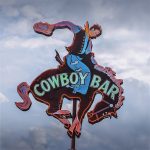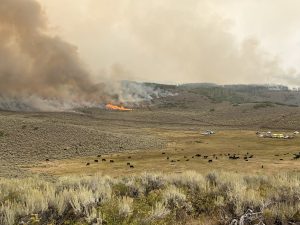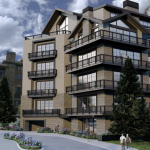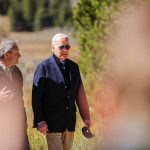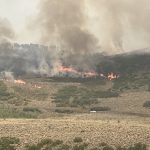Make pet rocks and color in foxes: Kids Corner for the week of 7/27/20
Editor’s note: The Vail Daily’s weekly kids section is chock full of activities and fun to keep the young and the young at heart entertained during the pandemic. If you have an idea for the section or would like to get involved, email Entertainment Editor Casey Russell at crussell@vaildaily.com.
Riddle me this
Easy
Riddle: When you look for something, why is it always in the last place you look?
Because when you find it, you stop looking.
Riddle: A cowboy rode into town on Friday. He stayed in town for three days and rode out on Friday. How is that possible?
Friday was the name of his horse.

Support Local Journalism
Riddle: What has three feet but cannot walk?
A yardstick.
Hard
Riddle: When you have me, you feel like sharing me. But, if you do share me, you don’t have me. What am I?
A secret.
Riddle: I am not alive, but I grow; I don’t have lungs, but I need air; I don’t have a mouth, but water kills me. What am I?
Fire.
Riddle: What stinks when living and smells good when dead?
Bacon.
Craft of the Week
Pet Rocks

You will need: Rocks, paint, Sharpies, pipe cleaners, hot glue gun, sequins, glitter, construction paper, scissors, other decorating and craft supplies.
Directions: After bringing your rocks inside, run them under some water to get rid of dirt, dry with paper towels, and wait until the water is evaporated to decorate. Paint rocks, add eyes and mouths. Make legs and horns from pipe cleaners. Use construction paper to make manes, ears and tails. Ask an adult to help you glue pieces to the rock using a hot glue gun.
Time travel
Learn about Eagle County’s history with tales from local ranches.
McCoy, at one time, was the most important little town along the Routt-Eagle County border in western Colorado. McCoy became the main travel location for travelers going to or from Wolcott, Kremmling and Steamboat.
Before settlers homesteaded in the area, McCoy offered abundant hunting grounds and protected winter lodging for the Ute Indians. This area became important to the White River Band of the Ute nation, as the Utes were pushed further west and north as settlers arrived into Colorado territory. Our White River National Forest is named after this northwest band of the Utes. Prior to white settlement, the Ute Nation covered approximately two-thirds of the present state of Colorado.
The famous Ute Chief Yarmonite lived in the McCoy area in harmony with the arriving settlers. Yarmony – the name of a ranch, a since-closed school and a mountain in McCoy – comes from the chief’s name. Following the Meeker Massacre in 1879, the majority of the Utes were assigned to reservations in Utah, and their territory was opened to settlers seeking a new life. Native American artifacts have been found in this region and some Utes were still seen in the area in the early 1900s when they returned to their favorite hunting grounds.
Charles McCoy, “Old Daddy McCoy,” could be considered the town’s founder. He arrived in the early 1880s, settling initially in Leadville and Minturn. He eventually headed west to the McCoy region, where he purchased two homesteads in 1885. The charismatic McCoy operated a ferry business, and in 1891 he opened a stagecoach stop, which later became a hotel and a focal point for the growing community.
He opened a post office one mile from the confluence of Rock Island and the Colorado River, known as The Grand River at the time. Sawmills and a nearby copper mine provided ample employment, and the area’s population peaked in 1909.
McCoy sold his business to Frank Groh in 1907, who added a general store. The Moffat line of the railroad reached McCoy in 1908 and connected Steamboat, Kremmling, Toponas and Denver. The new line was critical because it allowed transport of livestock and produce to Eastern cities. A fire destroyed the McCoy’s original hotel in 1958. It was never rebuilt.
The town was famous for hosting one of the area’s greatest rodeos. Ranchers bringing in livestock off summer grazing grounds in the high country brought their livestock directly to the rodeo.
In 1920, McCoy had 40 active ranches within 10 miles of town and the population was 250 residents. In 2018 the population was 26.
Time Travel is submitted by the Vail Valley Art Guild’s Ranch Project, which is chronicling local history through art. Learn more at vailvalleyartguild.org.
Word of the Week
Learn new words in English and Spanish each week.
fan / ventilador

Coloring page

Jasmine Valdez | Special to the Daily
Print the page here.
Learn how to make your own coloring pages here.




